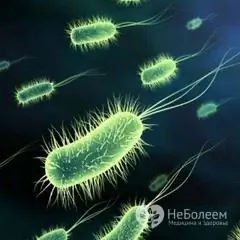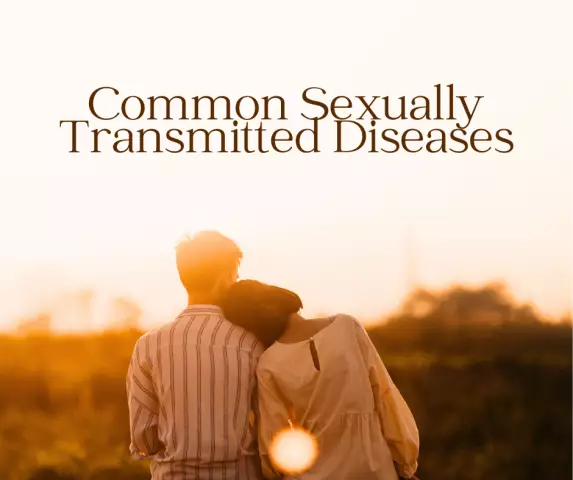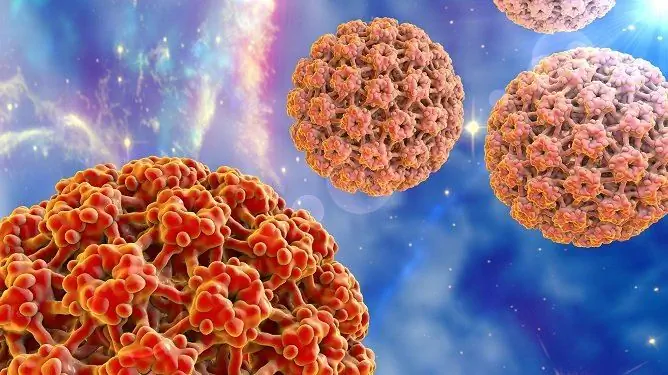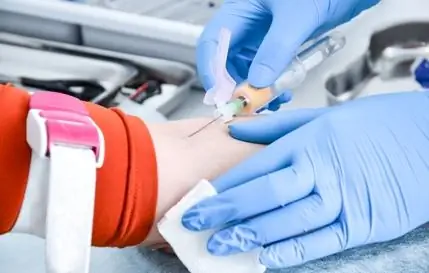- Author Rachel Wainwright [email protected].
- Public 2023-12-15 07:39.
- Last modified 2025-11-02 20:14.
Sexually transmitted diseases

Sexually transmitted diseases or STDs are a group of clinically heterogeneous diseases, united by sexual transmission and high social danger. In rare interpretations, you can find the term "sexually transmitted infections." The term STD was first proposed by the World Health Organization in 1980.
Sexually transmitted diseases: general information, routes of infection
Currently, the term STDs includes more than 20 types of infections and viruses. All STDs can be conditionally divided by the type of pathogen into:
- Parasitic - scabies, phthiriasis;
- Protozoal - trichomoniasis;
- Bacterial - syphilis, chlamydia, gonorrhea;
- Viral - genital warts (triggered by the human papillomavirus), genital herpes, HIV infection, molluscum contagiosum, hepatitis B;
- Fungal - candidiasis.
The main characteristic feature for all STDs is the high susceptibility of pathogens to changes in environmental conditions. Direct contact is necessary for infection, but the following factors should be considered:
- Not all diseases are transmitted exclusively through sexual contact. For the transmission of a viral infection, household contact is sufficient (sharing personal hygiene products with an infected person);
- Protective equipment for sexual intercourse does not give 100% safety. So, a focus of the herpes virus can be located on the labia, inner thigh, scrotum, other parts of the pubic area and groin that are not covered by a condom;
- The risk of contracting sexually transmitted diseases exists through oral contact through damaged mucous membranes. With anal contact, the risk of contracting an STD increases significantly;
- Shared sex toys, as well as personal care products, are also a route of transmission of STDs;
- Many STDs can go latent for a long time without giving cause for concern.
The main danger of contracting STDs is the complications and consequences of infection. The main consequences of late, latent sexually transmitted diseases are prostatitis, impotence at an early age, for women - infertility or miscarriages.
Most viruses and infections can penetrate the placenta and be transmitted to the fetus, causing intrauterine developmental disorders; in some cases, the consequences of intrauterine infection can manifest itself years later in the form of liver, kidney, heart dysfunction, and impaired child development.
Sexually transmitted diseases: symptoms, incubation period
All sexually transmitted diseases have different symptoms, incubation period and treatment methods.
In sexually transmitted diseases, the symptoms are somewhat general, non-specific:
- Itching, burning, redness of the genital area;
- Painful urination, cramps, lower abdominal pain;
- Uncharacteristic discharge;
- Symptoms of the inflammatory process in the body (fever, aches, weakness).
In sexually transmitted diseases, symptoms may not appear until the incubation period has elapsed. With mild symptoms, a person may not attach much importance to changes in the body, which will lead to the transition of the infection from an acute form to a chronic one.

Symptomatic complex of some STDs:
- Genital herpes is characterized by the presence of blisters on the skin, which subsequently break open, forming erosion, which heals without leaving a scar. Itching and burning are observed only at the site of infection. Regional enlargement of lymph nodes is often observed;
- Syphilis in the early stages is manifested by painless ulcers (primary chancres) on the genitals;
- Gonorrhea is manifested by abundant secretion of mucus and pus from the genitals, an unpleasant odor appears, and there is a frequent urge to urinate;
- Chlamydia is characterized by profuse mucopurulent discharge of a yellow tint with characteristic pains in the lower abdomen, in the external genital area in women. In men, this disease is manifested by symptoms of prolonged urethritis;
- Trichomoniasis is accompanied by bloody and purulent discharge in women with pronounced vaginal hyperemia. In men, this sexually transmitted disease is manifested by painful urination, purulent-mucous discharge from the urethra, and general symptoms of urethritis.
The incubation period for STDs is the period of time from the moment the pathogen enters the disease until the onset of the primary symptoms of the disease. Other names for this period are latent or hidden. The incubation period for STDs is different and can range from several days (gonorrhea, genital herpes) to several months or even years (genital warts, syphilis). It is due to the latency of the course of the first stage of the disease that the regular diagnosis of STDs takes on a special meaning, allowing you to identify diseases at early stages and take the necessary measures.
Prevention of sexually transmitted diseases
Currently, there are no effective contraceptive methods that provide a 100% guarantee of protection against STDs. The main methods of prevention of sexually transmitted diseases are:
- Primary prevention, which means informing the population (especially high-risk groups) about STDs, methods of contraception, preventing the transmission of diseases to healthy partners, as well as theoretically grounded intervention aimed at changing the behavior model of a modern person;
- Secondary prevention, which means working directly with carriers of STDs, aimed at reducing the likelihood of infection in healthy partners.
Individual prevention of sexually transmitted diseases involves the following measures:
- Correct, regular use of contraception;
- The use of local agents with a bactericidal effect;
- Regular examinations to detect STDs;
- Treatment of diagnosed viruses and infections;
- Sexual abstinence;
- Vaccination against certain types of oncogenic viruses (HPV, hepatitis B).
Public or social prevention of STDs is most effective when carried out in a timely manner in groups of adolescents who have not entered into sexual activity. Theoretical methods of prevention should be aimed not only at the correct protection against STDs, but also at developing the correct mechanisms of behavior when detecting sexually transmitted diseases.
The risk of contracting STDs has increased significantly with the popularization of the latest methods of contraception: hormonal contraceptives, intrauterine devices. Popular barrier contraception (condoms) is not a 100% defense mechanism against infection.
Antiseptic drugs and drug prophylaxis are effective only in the first 2-24 hours after unprotected intercourse.
Found a mistake in the text? Select it and press Ctrl + Enter.






